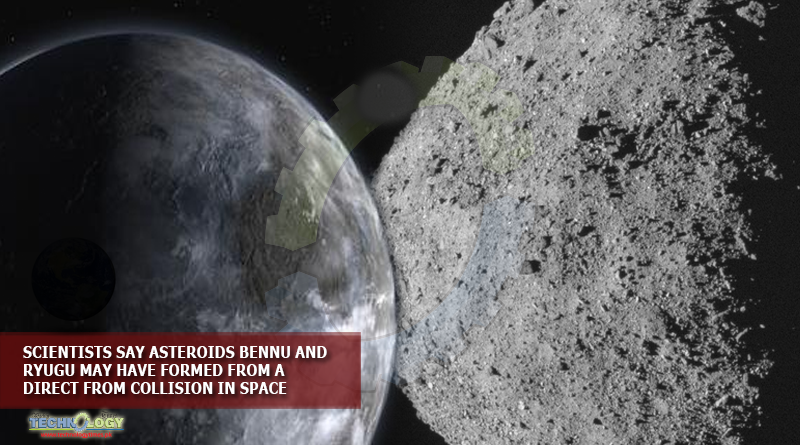A team of scientists led by the University of Arizona has discovered that the shape and Collision In Space hydration levels of asteroids named Bennu and Ryugu provide clues regarding their origins and shape.

Bennu is the target asteroid for NASA’s first asteroid sample return mission OSIRIS-REx.
Ryugu, on the other hand, is said to be the target of the Japan Aerospace Exploration Agency’s Hayabusa2 asteroid sample return mission.
Both Bennu and Ryugu are made of fragments of larger bodies that shattered upon colliding with other objects.
According to a report in Asteroid Mission, both Bennu and Ryugu are small fragments re-accumulated to form an aggregate body and may actually have formed from the same original shattered parent body.
While both celestial bodies are classified as ‘spinning top’ asteroids, until now, scientists thought that their shape was a result of thermal forces called the YORP effect.
The report mentions that the YORP effect increases the speed of the asteroid’s spin and over millions of years, material near the poles could have migrated towards the equator Collision In Space, leading to the formation of a spinning-top shape.
However, the results of the study, published in the journal Nature Communications see scientists from NASA’s OSIRIS-REx and JAXA’s Hayabusa2 teams argue that the YORP effect may not explain the shape of either Bennu or Ryugu.
Researchers argue that both asteroids have large impact craters on their equators and their size suggests that these craters are some of Bennu’s oldest surface features. Since the craters cover the equatorial ridges, their spinning-top shapes must also have been formed much earlier.
Speaking about the study, co-author Ronald Ballouz said that using computer simulations that model the impact that broke Bennu’s parent body, they were able to show that the asteroids either formed directly as top-shapes, or achieved the shape early after their formation in the main asteroid belt.
According to Ballouz, presence of the equatorial craters rules out any possibility that the asteroids experienced a recent re-shaping due to the YORP effect.
Originally Publish at: https://www.firstpost.com/
